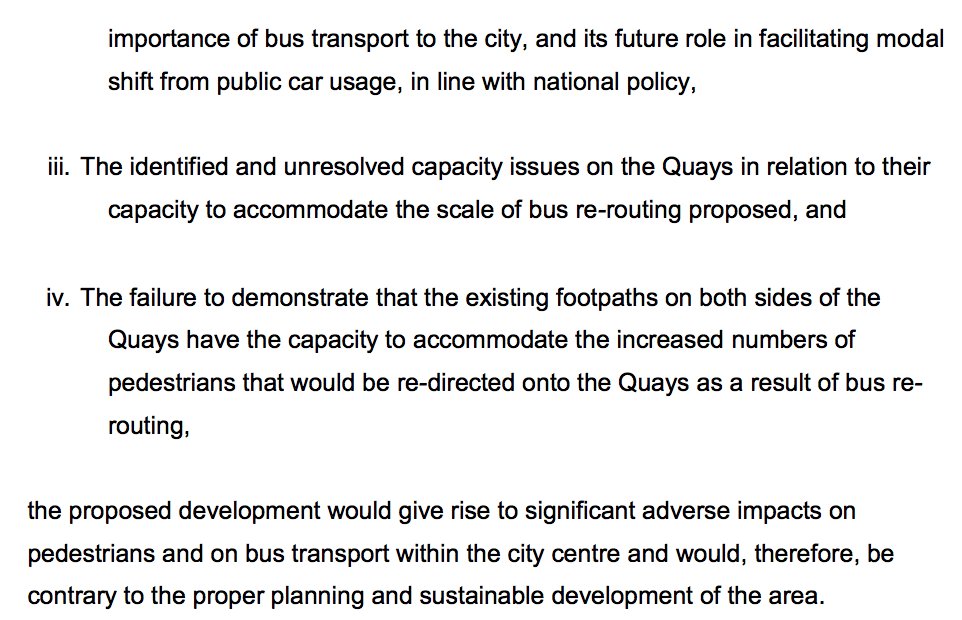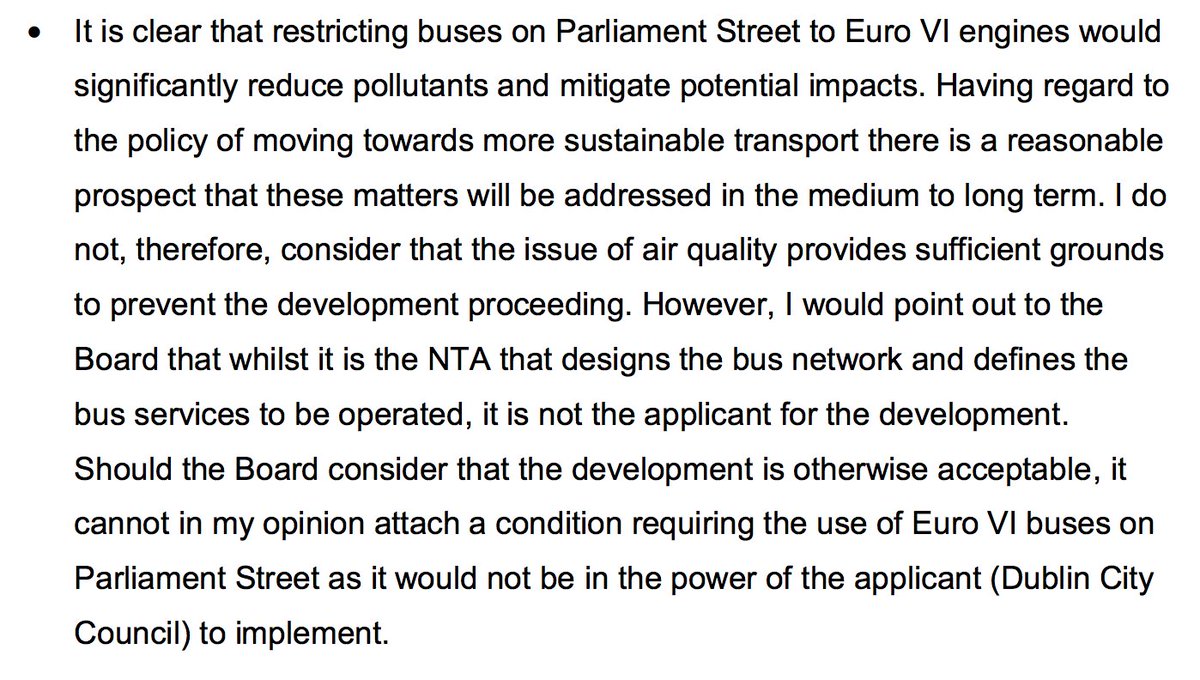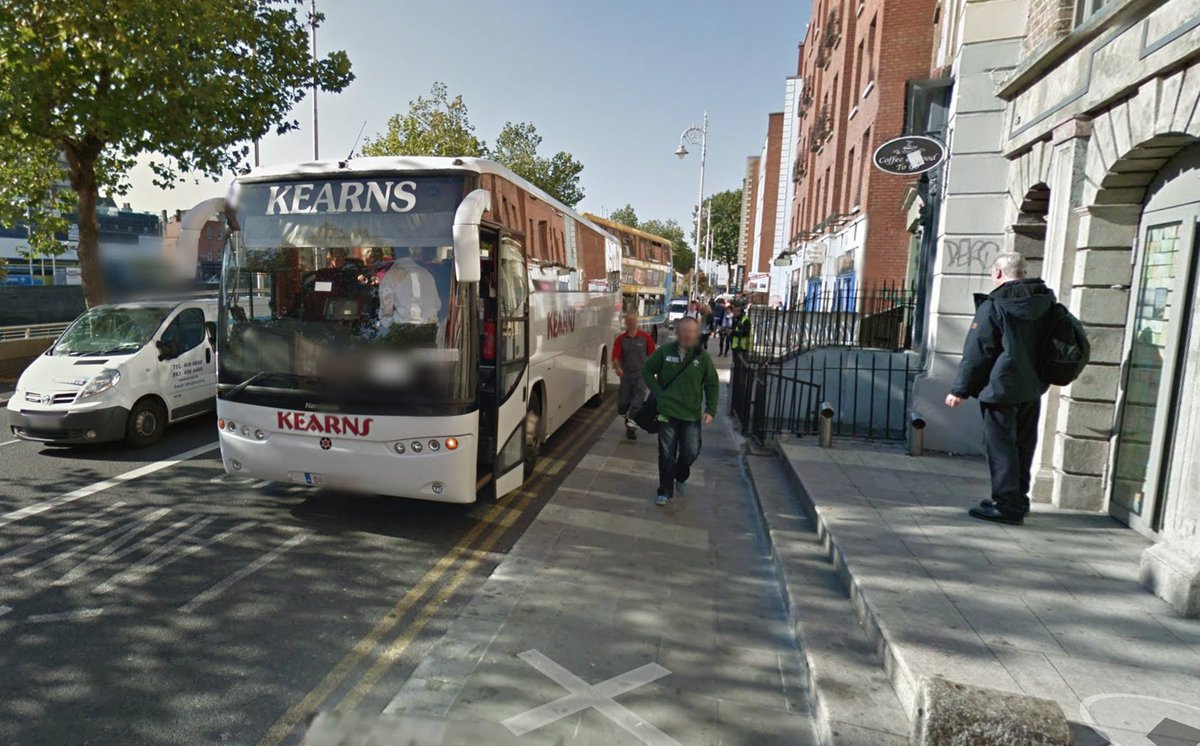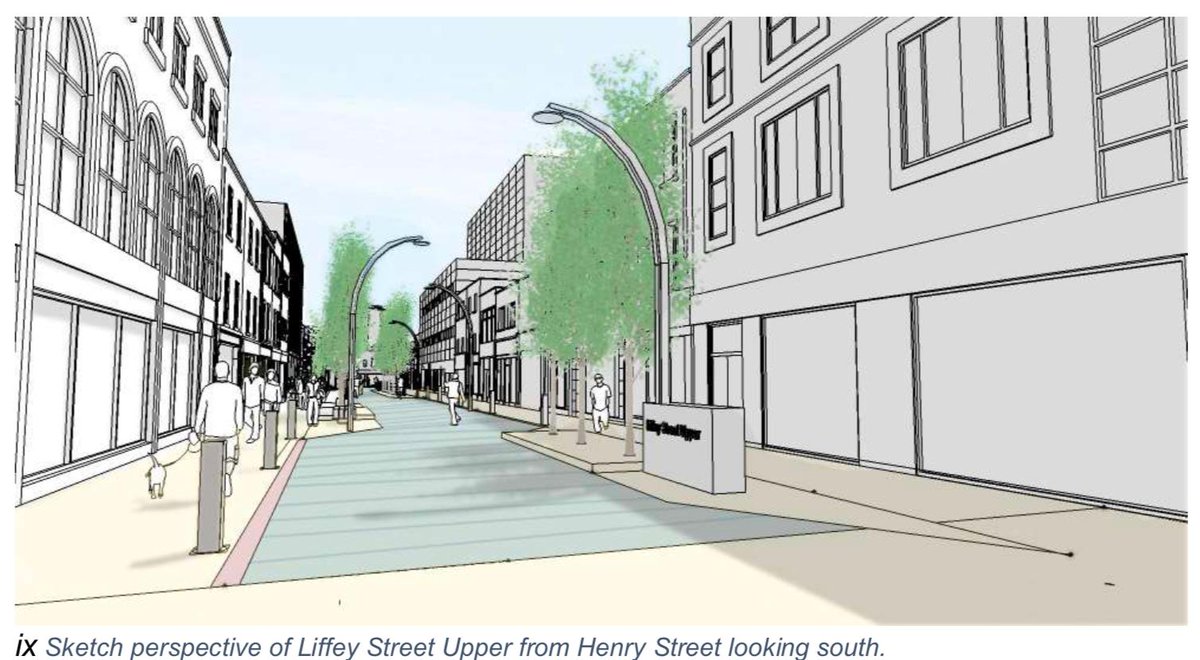
[Thread]: I've finished reading the full inspector's report on the College Green Plaza decision. It's an interesting read and includes lots of interesting insights. I'm personally disappointed but refusal isn't unreasonable. #CollegeGreen 

The decision says the principle of the development is acceptable. The four issues are the unclear traffic modelling; the impacts on bus passengers; can the quays support more buses; and failure to demonstrate that quays footpaths can support new bus passengers. 



The current situation in College Green is poor for all users. It needs a coherent plan. It's hard to walk around right now because of number of pedestrians and waiting on narrow footpaths. The Luas and buses need change too. There's too much competition for too little space. 







Interesting from the Inspectors Full Report (218 pages; pleanala.ie/news//JA0039/R…) many of the issues raised by the public/interest groups/businesses/residents were dismissed by the Inspector, which is good news for any future attempts to build the College Green Plaza.
The Inspector's report finds that there is strong public policy backing for the Plaza (pg 52). It also finds no issues with either the public consultations (pg 67) or any legal/procedural issues (pg 61). There are no issues with the construction plan either.
The Inspector dismissed claims
• Hotels/taxis, there’s alternative routes (pg 129)
• Car parks, significant negative impacts but necessary (pg 133)
• Architectural impact on Parliament Street were acceptable
• Hotels/taxis, there’s alternative routes (pg 129)
• Car parks, significant negative impacts but necessary (pg 133)
• Architectural impact on Parliament Street were acceptable
The Inspector rejected the assertions of the transport consultation the the College Green Plaza would have significant negative impacts on cyclists. The Inspector accepted that the proposals while no perfect would have a positive overall impact for cyclists. (pg 116)
The Inspector found that the impact for pedestrians within the Plaza would be positive. (No surprises there. It is a pedestrian and cycle plaza after all) It would allow for growth in pedestrian numbers in the area and remove delays for pedestrians. However, it found negative...
... impact for pedestrians on the quays. This is because re-routed buses would have bus stops on the quays. (pg 128) That's lots more people. This is important and a large reason for the rejection.
Noise and air pollution concerns on Parliament Street were a large part of the submissions and the oral hearing. Residents on Parliament Street being particularly concerned that most buses from College Green would be re-routed their way.
In the end the Inspector accepted the air pollution analysis from DCC/NTA and concluded things would be acceptable if only Euro VI standard diesel buses (or better) were used on Parliament Street (pg 186). Though included this interesting warning: 

Pg 100-101 are the summary of the long and detailed bus impact section in the Inspector's report. The full section is good long read that dives into lots of issues.
This section is hugely important. A "reasonable level of accessibility by bus will be maintained" -- so the idea isn't completely ruled out. But then mentions how a west-east (Dame Street to Westmoreland St) bus lane as a "Stage 1 approach" would resolve bus issues. 

We also see a key part of the reason for rejecting the proposal. "I do not consider that the capacity of the Quays to accommodate the additional buses has been adequately addressed in the EIAR." -- The complaint is there isn't enough detail to decide rather than it's bad idea.
The key complaint appears for buses and for the increased pedestrian numbers of the quays. It's not that it is impossible to do. It is just that the planning application didn't provide enough evidence to show it would work.
My personal feeling is that the council do need to upgrade the footpaths on both North and South Quays to handle the increased numbers of bus passengers waiting. Wider footpaths and less clutter would improve the pedestrian experience. 



The council must also improve the pedestrian paths through Temple Bar that link the Quays to College Green. They are substandard and car dominated. The footpaths are too narrow. The cobbled streets dangerous for vulnerable pedestrians. 







You may be wondering where do we get all of the extra space for wider footpaths from. The answer is obvious but not easy. From the private car. In the core city centre the private car has a disproportionate amount of space given how few people it moves.
The council's first step is to implement the Bus Gate on the Quays as they proposed in the 2016 Transport Study for Dublin. This would remove private car access from Bachelor's Walk and George's Quay. Then reallocating space to pedestrians, cyclists and buses is easier. 

We're a quickly growing city. We need to evolve to grow. The competition for space is increasing. Space is our biggest commodity. We are not going to widen streets. We need to use and share our public space efficiently. That means pedestrians, bikes and buses not cars. 

I really do hope that @DubCityCouncil re-apply for the College Green Plaza taking on-board the criticisms of ABP. Implementing a broader car restrictions and building wider footpaths will produce a more liveable Dublin. One that improves the quality-of-life of it's residents.
Either the council should come back with rock solid plans for improving the quays for pedestrians, cyclists and bus users to handle the knock on effects of College Green Plaza. Or...
... do the Stage 1 suggestion that would run a west-east bus lane through College Green. Side-stepping many of the bus/pedestrian issues but undermines the Plaza. Then in 15 years when more traffic restrictions and better public transport exists revisit a traffic-free Plaza. 

Coming up with a solid plan for College Green is important for Dublin. We need to get it right. I'm disappointed there wasn't an approval today. The benefits would have been huge. But the negatives were not mitigated. Let's hope next time is different.
@CiaranCuffe @padsmyth @Costellop can you take Owen Keegan aside and give him a big hug. I know he’s feeling defeated by College Green decision. He announced the plaza as “dead” on the radio. The ABP Inspector’s report dismissed almost all concerns raised. It is salvageable.
• • •
Missing some Tweet in this thread? You can try to
force a refresh





























